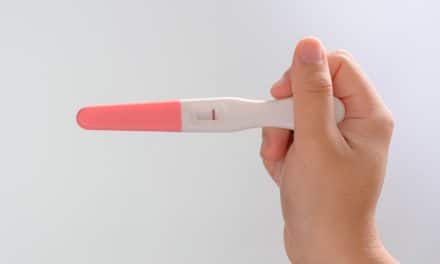Thyroid problems are very common. However, they are little known by most people and can go unnoticed, as the symptoms they cause are usually rather unspecific: tiredness, dry skin, lack of appetite, nervousness, constipation… But it is important to be vigilant, as an imbalance in the thyroid can disrupt the body’s hormonal balance, interfering with ovulation, causing irregular menstrual cycles, infertility, and other health problems.
Thyroid problems are very common. They affect women more than men, especially women in their 40s and 50s. However, despite being quite common, they are little known to most people, and many of those affected are unaware of their condition. The reason for this is that some of the symptoms they can cause are rather unspecific: tiredness, dry skin, lack of appetite, apathy, nervousness, hair loss, menstrual irregularities, sensitivity to the cold, weight changes, constipation… This is why it is important to be vigilant, because if these imbalances are not detected and treated, they can cause other more serious problems, such as cardiovascular disorders or infertility.
What does the thyroid have to do with the female reproductive system, you may ask? The answer is simple. The thyroid is a gland located in the front of the neck, and its function is to produce two hormones: triiodothyronine (T3) and thyroxine (T4). These hormones are essential for the proper functioning of different organs and systems in the body, as they regulate several bodily processes and reactions. In addition, they interact with female sex hormones, so an imbalance in the thyroid affects the hormonal balance of the reproductive system and can interfere with ovulation and cause irregular menstrual cycles, making it more difficult to get pregnant. They can also affect egg quality and increase the risk of miscarriage or pregnancy complications such as pre-eclampsia, premature birth, postpartum haemorrhage, low birth weight, intrauterine death, neonatal respiratory distress, and impaired neurological development (low IQ). Therefore, if you have any of the symptoms mentioned above or are considering becoming pregnant, you should have a blood test to check your thyroid hormone levels and, if there is a problem, treat it.
Watch your diet. A healthy dietary intake of iodine is essential for the proper functioning of the thyroid gland, as the thyroid makes thyroid hormones (T3 and T4) from iodide. The main source of iodine is iodised salt, with other sources being milk and fish. For adequate iodine intake, you should have 3 servings of milk or milk products and 2 g of iodised salt per day. In addition, intake should be continuous: adding iodised salt to your diet during pregnancy is not enough, as to ensure an adequate intake you should add iodine to your diet at least 2 years prior to the onset of pregnancy.
What are the treatments available? The most common thyroid disorders are hypothyroidism and hyperthyroidism. In the first case, the thyroid gland does not produce enough thyroid hormones (underactive gland). In the latter, it produces more than usual (overactive gland). Treatment of hypothyroidism consists of taking a daily dose of synthetic thyroxine (T4). This helps regulate your hormone levels and return your metabolism to normal. In the case of hyperthyroidism, the treatment will depend on the type of hyperthyroidism and other variables, such as your age, your physical condition, and your state of health. In some cases, the treatment consists of taking antithyroid drugs to reduce the amount of T3 and T4 and alleviate the symptoms. In other cases, radioactive iodine or surgery may be necessary.
What you should know if you want to get pregnant: women being treated for hypothyroidism who wish to become pregnant should have a pre-conception blood test and postpone pregnancy until they achieve ideal hormone control. Once they get pregnant, they should have specific blood tests and, if necessary, adjust the dose of their thyroid medication, explains Dr Laura Perdomo, a gynaecologist at Dexeus Mujer specialising in high obstetric risk. Similarly, untreated or incorrectly treated hyperthyroidism is associated with numerous complications both in pregnant women and outside pregnancy. Therefore, for women of childbearing age, it is essential to identify and treat hyperthyroidism correctly. Women diagnosed with hyperthyroidism should plan their pregnancy in consultation with their endocrinologist and gynaecologist, choosing a time when the condition is stable.
If thyroid problems are treated, are the chances of getting pregnant and becoming a mother the same as for any other woman? In theory, yes. However, careful monitoring is required, as during pregnancy the concentration of thyroid hormones in the blood, which are crucial for the development of the baby’s brain and nervous system, increases naturally. In fact, thyroid imbalances can also occur in healthy women during pregnancy, although they are usually temporary.
If you are about to start a fertility treatment, it is also very important to monitor and check whether your thyroid hormone levels are correct because with ovarian stimulation treatments, there is an increase in the production of oestradiol (produced by the growing ovarian follicles) and the thyroid hormone thyroxine (T4), which could lead to a more severe hypothyroidism if you have subclinical hypothyroidism (i.e., hypothyroidism before the start of the fertility treatment). If an alteration of the thyroid hormones (TSH, T3 or T4) is found, it is advisable to carry out other tests to assess whether an autoimmune disorder is causing the problem. “These types of disorders are more frequent in women who have fertility problems. In these cases, pregnancy rates may be lower and the risk of miscarriage higher”, explain the fertility specialists at Dexeus. In addition, thyroid hormones are involved at the uterine level during embryo implantation and the early development of the future placenta. Therefore, it is essential to check whether the thyroid is functioning properly in order to increase the chances of achieving a pregnancy, reduce possible risks, and ensure that it is successfully carried to term.










